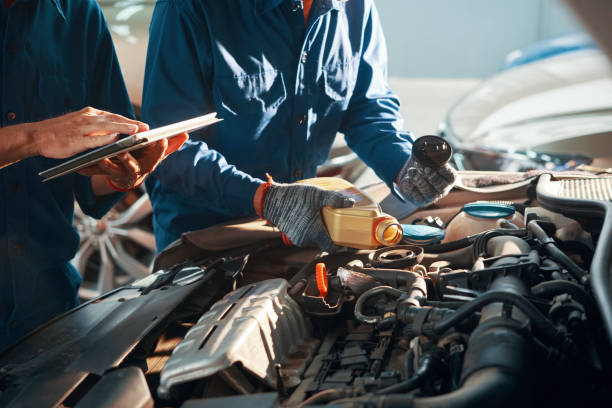
Modern vehicles come equipped with numerous safety features designed to protect passengers and enhance control in unpredictable situations. Among these, the Anti-lock Braking System (ABS) stands out as a critical advancement in automotive safety. It’s more than just a brake system—it’s a guardian angel that silently operates in the background, ensuring stability during sudden stops and slippery conditions.
In this article, we’ll dive into how ABS works, what components make up this sophisticated system, and why it plays a crucial role in safe driving. Along the way, we’ll also touch on the importance of understanding the parts of car systems and how each piece contributes to the vehicle’s overall performance and safety.
What Is ABS and Why Does It Matter?
ABS is a safety system in vehicles that prevents the wheels from locking up during heavy braking. When wheels lock, the vehicle can skid uncontrollably, especially on wet or icy surfaces. ABS helps the driver maintain steering control, allowing them to avoid obstacles even while braking hard.
ABS became widely adopted in the 1980s and has since evolved into a standard feature in most vehicles. It’s no longer a luxury—it’s a necessity for safe and responsive driving.
Key Components of an ABS System
Understanding ABS means knowing its core components. Each part works together to monitor and control braking pressure, ensuring optimum grip and maneuverability.
1. Wheel Speed Sensors
- Located at each wheel, these sensors monitor the rotational speed.
- They detect when a wheel is about to lock up.
2. Electronic Control Unit (ECU)
- Acts as the brain of the ABS.
- Receives data from wheel sensors and determines if any wheels are slowing down too rapidly.
3. Hydraulic Control Unit (HCU)
- Modulates brake pressure through valves.
- Adjusts the braking force to prevent wheel lockup.
4. Valves and Pumps
- Regulate the brake pressure applied to each wheel.
- Return the system to normal once the danger of locking is passed.
Benefits of ABS for Everyday Drivers
ABS isn’t just useful for high-speed chases or icy highways; it plays a vital role during everyday driving as well.
Improved Steering Control
During emergency braking, ABS lets you steer rather than skid, which can be life-saving in critical moments.
Shorter Stopping Distance (On Certain Surfaces)
On wet or slick roads, ABS can reduce stopping distances, minimizing collision risks.
Enhanced Tire Longevity
By avoiding flat spots caused by locked wheels, ABS extends the lifespan of your tires.
Insurance Incentives
Many insurance providers offer discounts for vehicles equipped with ABS, recognizing their added safety value.
How ABS Works in Real-Time Scenarios
Imagine you’re driving down a city street when a cyclist suddenly appears in your path. You slam on the brakes—without ABS, your wheels might lock, sending you into an uncontrollable skid. With ABS, the system immediately senses the lock-up, adjusts the brake pressure, and helps you steer around the cyclist safely.
This kind of precision is possible because ABS operates in milliseconds—far faster than any human reaction time.
Why You Should Know Your Vehicle’s Safety Systems
As vehicles become more complex, so does the responsibility of owning one. It's not enough to fuel up and drive. Being aware of essential systems like ABS—and the broader parts of car—helps you make informed decisions about maintenance, repairs, and upgrades.
Having a basic understanding of your vehicle's inner workings isn't just for mechanics. It's for every driver who values safety, efficiency, and long-term vehicle performance.
Frequently Asked Questions (FAQs)
Q1. Can ABS fail or stop working?
Yes, like any electronic system, ABS can malfunction. Common signs include a lit ABS warning light or unusual brake behavior. If you suspect an issue, consult a certified mechanic promptly.
Q2. Do all cars come with ABS today?
Most modern cars do, especially those manufactured after the 2010s. However, some base or older models might not have ABS as standard. It's wise to confirm this when buying a used car.
Q3. Does ABS work on all road surfaces?
ABS performs best on wet or slippery roads. On gravel or loose surfaces, it may slightly increase stopping distance, but still provides better control.
Q4. Is ABS maintenance expensive?
Routine maintenance is generally affordable, especially compared to the potential costs of accidents or tire damage. Replacing ABS components can vary in cost depending on the make and model.
Q5. Will ABS reduce braking distance in every case?
Not always. On certain dry surfaces, traditional braking might stop slightly faster, but ABS is designed to offer control—not just reduced distance.
ABS and the Bigger Picture in Car Safety
ABS is just one part of the wider safety ecosystem in modern vehicles. Coupled with systems like Electronic Stability Control (ESC) and Traction Control, it forms a strong foundation for road safety. But safety also depends on the quality and condition of your vehicle’s body parts for cars—from bumpers to frames and everything in between.
Whether you're replacing old parts or upgrading for better performance, PartEazy is your go-to destination for premium car and truck parts and accessories. Whether you're a DIY enthusiast, a professional mechanic, a performance upgrader, or simply looking for an affordable fix, we offer high-quality products and exceptional service to keep your vehicle running at its best.
Keep control, stay safe, and drive with confidence—upgrade your car the smart way with PartEazy.
